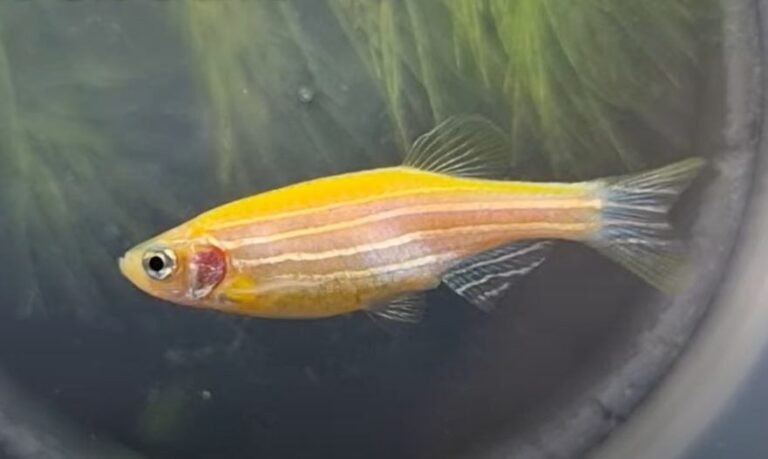Are Zebra Danios Aggressive?
Zebra Danios are one of the most popular aquarium fish. Their peaceful, community-oriented nature makes them ideal tank mates. However, you have also noticed occasional flares of aggression – a chased fish, a nip of fins. You wonder, are my Zebra Danios Aggressive and start fighting?
Zebra Danios are generally peaceful and not entirely immune to aggressive tendencies. Much like humans, fish have individual personalities. Some Zebra Danios are more aggressive, territorial, and dominant than others. Competition over food, mates, or prime habitat can induce aggression.
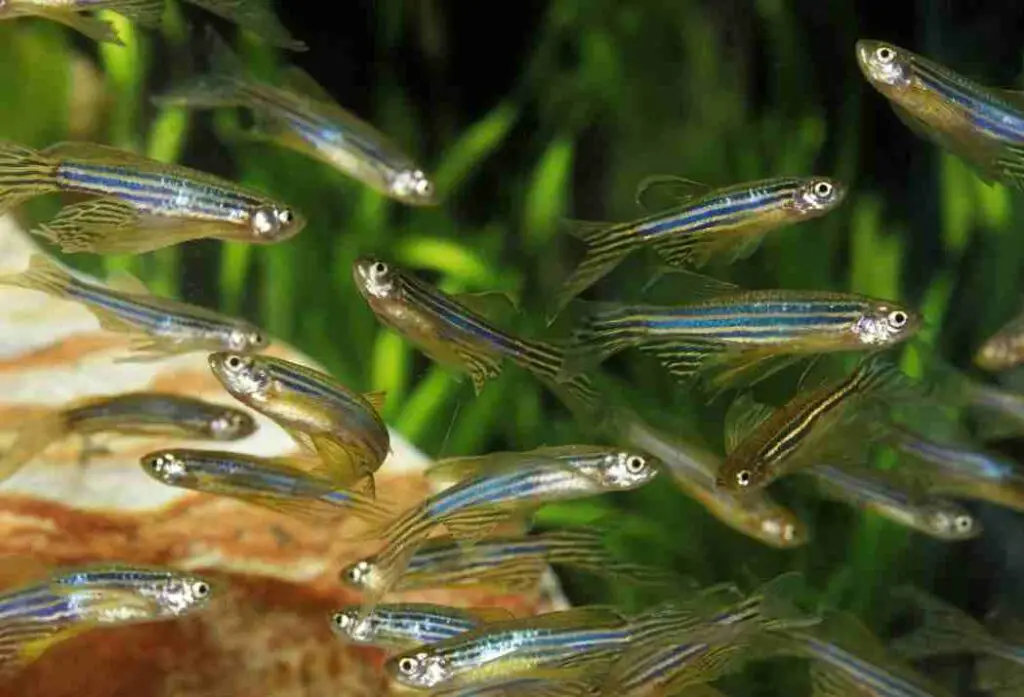
Table of Contents
- Zebra Danios Zebra Danios Aggressive Behavior
- Danios in Small Tank Size
- Danios Mating Season
- Reasons Why Zebra Danios May Chase Each Other
- How Zebra Danios Aggression Can Potentially Lead To Death?
- Guidelines on ideal Zebra Danios group sizes and tank requirements
- Zebra Danios aggression towards other fish
- Conclusion
Zebra Danios Zebra Danios Aggressive Behavior
Zebra Danios are generally peaceful, but there are a few key reasons why they may become aggressive at times:
Small Group Size
As schooling fish, Zebra Danios thrive in groups of 6 or more. Smaller group sizes prevent them from forming a cohesive school, which is essential to their well-being. In groups smaller than 6, they become stressed and territorial. Without safety in numbers, they become hyper-vigilant and aggressive, nipping fins and chasing one another. Solitary Zebra Danios often become depressed and lethargic. Ensure your school has 6-10 Zebra Danios to promote harmonious behavior.
Crowding and Small Tanks
Crowding Zebra Danios in too small of a tank also induces aggression. Even in an appropriately sized school, insufficient swimming space amps up aggression. Zebra Danios need at least 10 gallons for a small school and ample horizontal swimming room. Without enough territory, they become territorial and aggressive. Reduce crowding and use a sufficiently large tank to curb aggression.
Poor Water Quality
Poor water quality stresses Zebra Danios and makes them prone to aggression. Ensure pristine water conditions with proper filtration, frequent water changes, and testing for ammonia, nitrites, and nitrates. Proper water parameters and temperature will keep your school happy and peaceful.
Hunger
Hunger can spark aggressive behaviors as Zebra Danios compete for food. Feed a high-quality diet in moderation 2-3 times per day. Spread food across the tank to prevent crowding. Well-fed Zebra Danios have less reason to squabble over resources.
Danios in Small Tank Size
Keeping Zebra Danios in too cramped of a tank is a prime trigger for aggression. These active schooling fish require ample swimming room for their signature synchronized movements. Zebra Danios become stressed in tanks less than 10 gallons as they bump into each other while swimming.
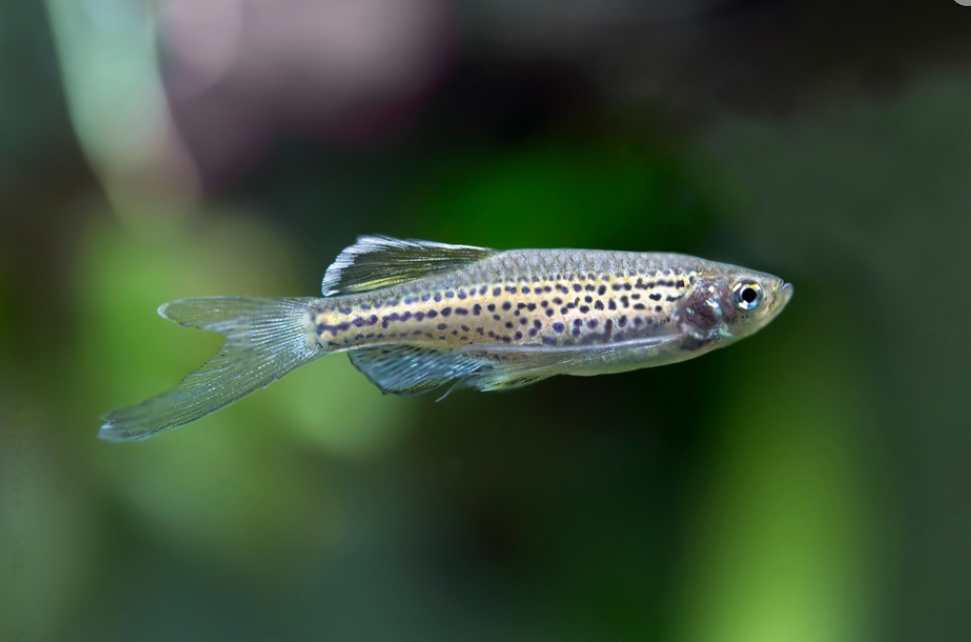
Insufficient tank size also causes rapid deterioration of water quality. With less dilution, ammonia, and nitrates spike quickly. Poor water quality adds immense stress, making Zebra Danios highly aggressive. They may relentlessly chase and nip at each other in a cramped, unsuitable tank.
Small tanks also mean less oxygenation. Zebra Danios are active fish with high oxygen needs. In a cramped tank, oxygen levels plummet rapidly. Low oxygen causes Zebra Danios to gasp at the surface, become listless, and lash out aggressively at one another.
Always house Zebra Danios in a spacious 10+ gallon tank with robust filtration. This allows them ample room to swim in a coordinated school and maintains high water quality. Avoid small tanks, as the crowded conditions will bring out the worst in your otherwise peaceful Zebra Danios.
Danios Mating Season
The breeding season can turn peaceful Zebra Danios into fierce competitors. When conditions trigger spawning, males become aggressive as they vie for prime mating opportunities. They aggressively chase away rival males from approaching females.
The males also quarrel, establishing a social hierarchy where the dominant male claims the right to court females. Their colors become more vivid as they display to potential mates. Even females may nip at each other as they compete for the attention of desirable males.
To curb mating aggression, identify a prime male and female pair, moving them to a separate tank to spawn. Remove the adhesive eggs to a hatchery.
However, heightened aggression may continue among the original school even with the breeding pair removed. This natural fish behavior during the spawning season will subside over time. Be patient, provide ample plants for hiding, and wait for their hormones to settle.
The aggression of Zebra Danios during mating time can be alarming but is simply a sign of their biological drive to continue their species. The school will soon return to its peaceful ways with proper steps taken.
Reasons Why Zebra Danios May Chase Each Other
- Playing –
Chasing, bullying, and nipping among Zebra Danios is often harmless playing and exercising. Watch for any natural aggression, like persistent bullying or injuries. Gentle chasing is normal social behavior.
- Establishing Dominance –
A more dominant Zebra Danios may chase others when introducing new fish or rearranging decor. They are re-establishing the social pecking order. This usually resolves once the hierarchy is settled.
- Bullying –
Occasionally, an aggressive fish will relentlessly bully particular tank mates. Targeted chasing indicates actual bullying. Remove the bully fish temporarily or permanently if it persists.
- Breeding –
As mentioned, males fiercely chase rivals during breeding time. This is hormonal and subsides after spawning.
- Crowding –
Too many fish in a small space leads to chasing from stress. Reduce crowding by upgrading tank size and numbers.
- Resources –
Chase behavior can erupt over scarce resources like food, mates, or territory. Ensure adequate resources to curb this.
So unless it seems aggressive or causes harm, chasing is likely harmless Zebra Danios play. It’s an active species that enjoys engaging with its schoolmates. Monitor for injuries or distress, but moderate chasing is a natural behavior.
How Zebra Danios Aggression Can Potentially Lead To Death?
While outright killing is rare, Zebra Danios’ attack can inadvertently lead to death if left unchecked. Their frequent nipping, chasing, and fighting over resources can physically harm Danio’s tankmates.
The quick bites of their tiny mouths may seem harmless initially. However, repeated nibbles and tears to fins slowly cause cumulative damage. Ripped fins are prime targets for bacterial or fungal infections. Fin rot and other diseases can set in and become fatal if not treated promptly.
Severely weakened or stressed fish from bullying may also stop eating, become lethargic, and fail to thrive. Their immune systems grow compromised, and they eventually succumb to illness.
In many cases, the relentless nipping and damage from a particularly aggressive Zebra Danios may directly weaken or kill another fish. But usually, the harm is more insidious, slowly setting the stage for disease and decline.
Careful monitoring for aggression, prompt removal of bullies, and ideal environmental conditions are key to preventing the indirect impacts of attack from escalating to death. While outright killing is rare in Zebra Danios, their feistiness can quietly sow the seeds for tragedy in the tank if left unaddressed.
Guidelines on ideal Zebra Danios group sizes and tank requirements
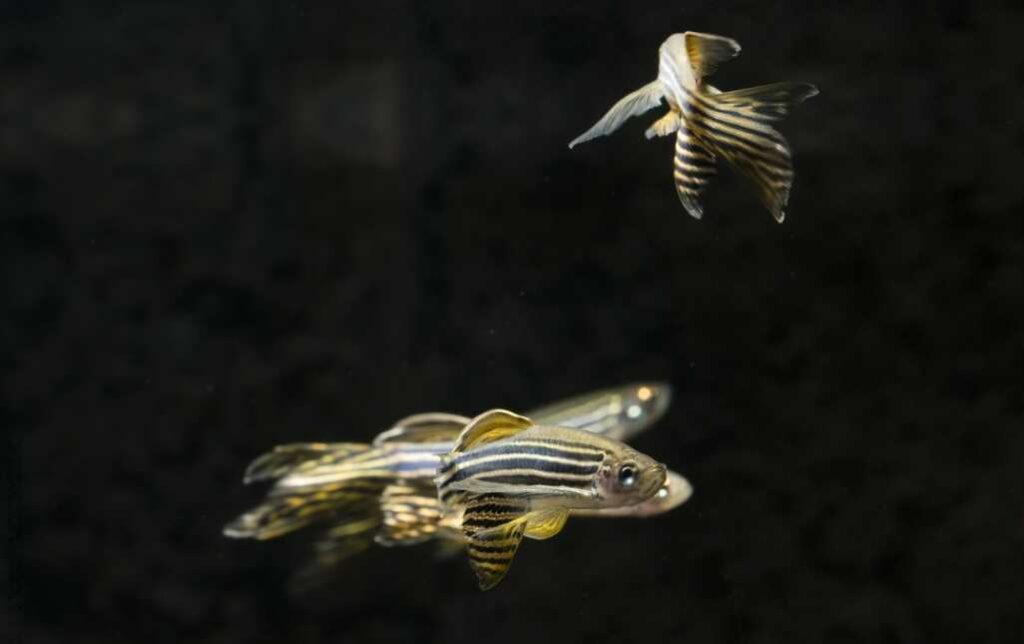
- Minimum of 6 Zebra Danios. This allows them to properly school. Any less, and they become stressed.
- 10-12 Zebra Danios is ideal for a 10-gallon tank. This provides ample swimming room.
- Allow approximately one Zebra Danio per 1 gallon of water. This ensures adequate space.
- If filtration is robust, you can add 1-2 more above the recommended limit.
- 15-20 Zebra Danios can work well in a heavily planted 20-gallon tank. Provides good school size.
- Too many Zebra Danios in a small tank can risk aggressive behavior and disease outbreaks.
- Overcrowding stresses Zebra Danios even in a large group, leading to aggression.
So provide at least 10 gallons for 6-12 Zebra Danios. Up to 20 works in a 20-gallon tank. To curb aggression, focus on schooling needs and swimming space over total fish count. Proper school size and room to move are essential for happy, healthy Zebra Danios.
tinyfishtank.com
Zebra Danios aggression towards other fish
In most cases, Zebra Danios live peacefully with other fish species and do not initiate attacks. Their schooling nature makes them focused on their kind. However, there are a few exceptions:
- Zebra Danios will readily consume smaller fish and fry. Their omnivorous appetites lead them to hunt down baby fish as prey. This includes both Zebra Danios fry and fry of other species.
- Occasionally a particularly aggressive Zebra Danios may bully more passive tank mates like Rasboras and small guppy fries. Chasing, fin-nipping, and competition for food can occur.
- Highly territorial or predatory fish like bettas, cichlids, Angelfish, and large gouramis may attack Zebra Danios, though the Zebra Danios do not provoke confrontation. Their bright colors and activity can trigger predatory species.
- During breeding, male Zebra Danios become aggressive to other fish approaching females. They chase away potential competitors.
So, Zebra Danios generally co-exist peacefully with other species, and exceptions occur depending on the species’ temperaments and situations like spawning. Choose tank mates wisely and monitor for any aggression emerging over time.
However, there are steps you can take to curb aggressive behavior and maintain harmony. Provide plenty of plants and rocks for fish to claim as their own space. Reduce crowding by keeping a moderate population in a sufficiently large tank. Feed a varied, nutrient-rich diet so there’s no fight over resources.
Conclusion
Zebra Danios are generally relatively peaceful fish when kept in proper conditions. While they may occasionally nip, chase, and quarrel, outright aggression is uncommon in this species.
The keys to curbing aggressive behaviors are:
- Maintaining a school of 6+ Zebra Danios, which satisfies their social needs
- Providing a sufficiently large tank (10+ gallons) to allow swimming room
- Ensuring high water quality through filtration and frequent changes
- Feeding a varied, nutrient-rich diet to avoid competition
- Removing actual bully fish that relentlessly terrorize tank mates
- Monitoring water parameters and overall health to nip problems in the bud
- Exercising patience during the breeding season when they get extra aggressive
With their needs met, Zebra Danios reward their owners with dazzling colors and graceful schooling behaviors. While they have occasional tussles, their captivating presence in community aquariums makes that a small price to pay. With minimal effort, you can enjoy their peaceful nature.
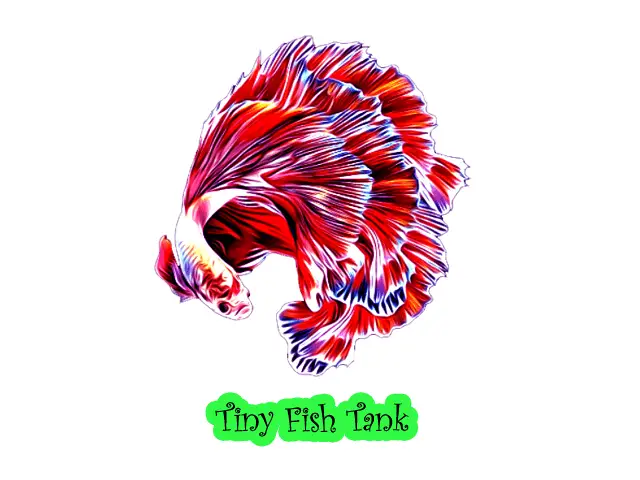
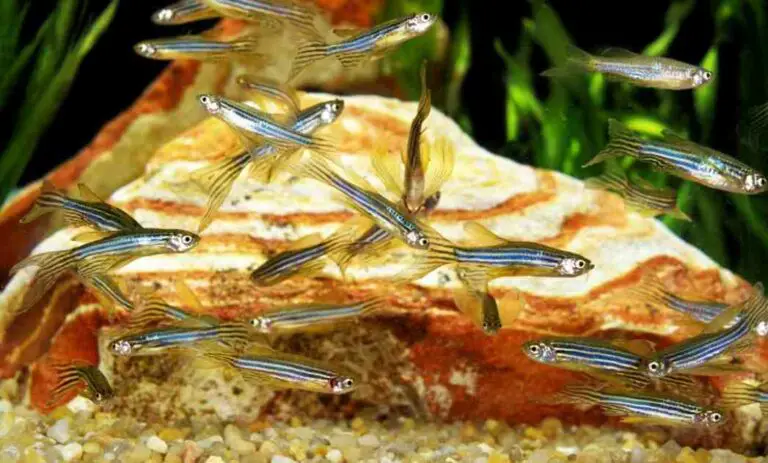
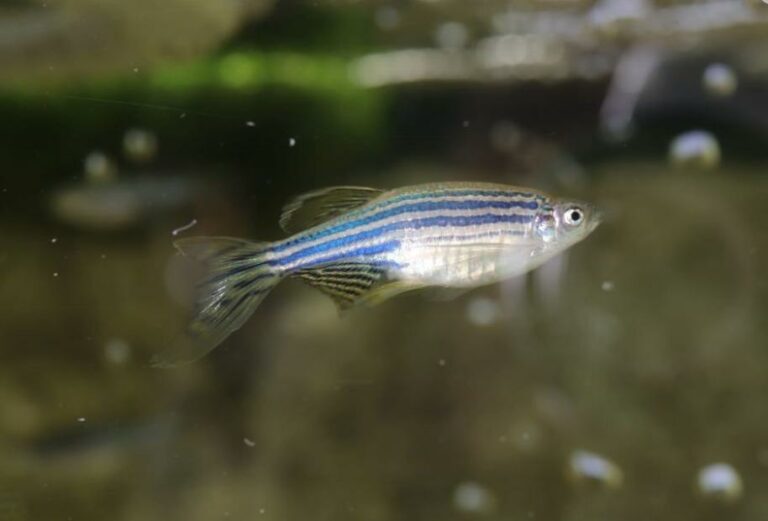
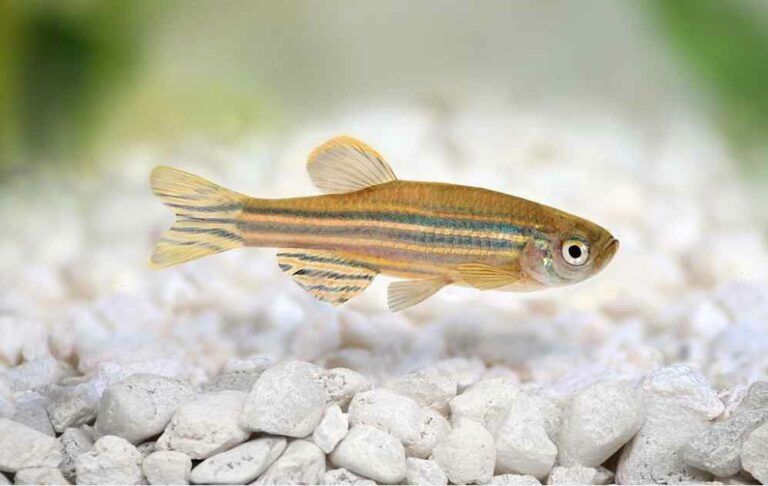
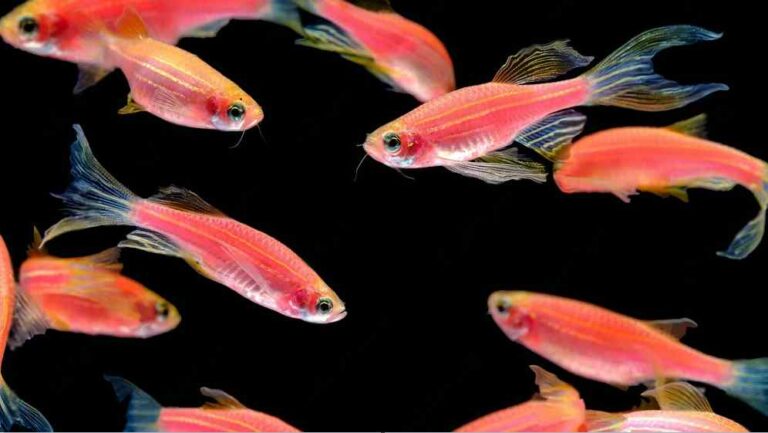
![Do Zebra Danios Need Oxygen and Air Pump? [3 Hidden Facts]](https://www.tinyfishtank.com/wp-content/uploads/2023/08/Danios-Need-Oxygen-768x479.jpg)
